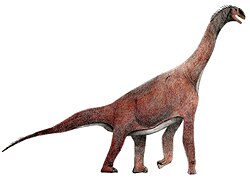| Guettioua Formation | |
|---|---|
| Stratigraphic range: Bathonian-Callovian, | |
| Type | Geological formation |
| Underlies | Iouaridène Formation |
| Overlies | Tilougguit Formation |
| Thickness | Around 281 metres (922 ft) |
| Lithology | |
| Primary | Sandstone |
| Other | Siltstone, marl |
| Location | |
| Coordinates | 32°30′N5°48′W / 32.5°N 5.8°W |
| Approximate paleocoordinates | 27°54′N1°24′W / 27.9°N 1.4°W |
| Region | Azilal Province, Beni Mellal, Ouarzazate Province |
| Country | Morocco |
| Extent | Béni Mellal-Khénifra |
The Guettioua Formation is a geological formation in Morocco. It dates back to the Middle Jurassic. [1] It largely consists of sandstone, and is of continental origin. It is the lateral equivalent of the marine El Mers Formation.

